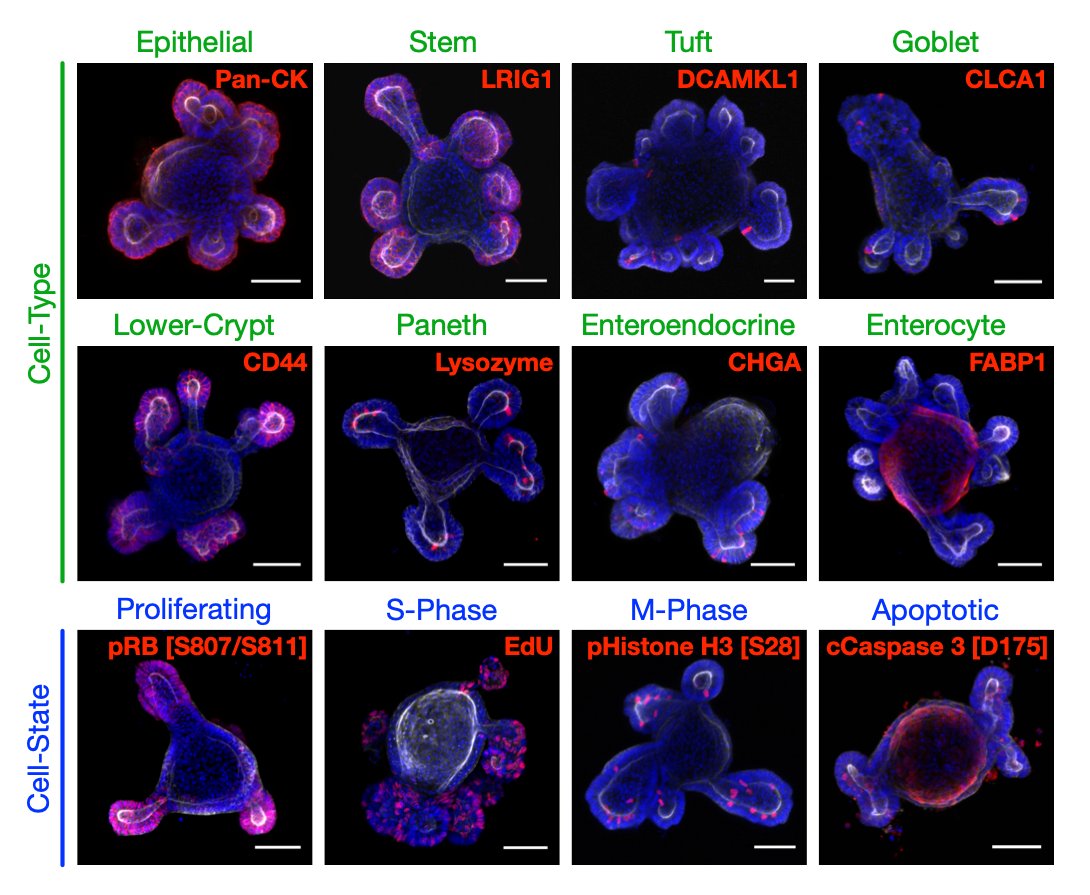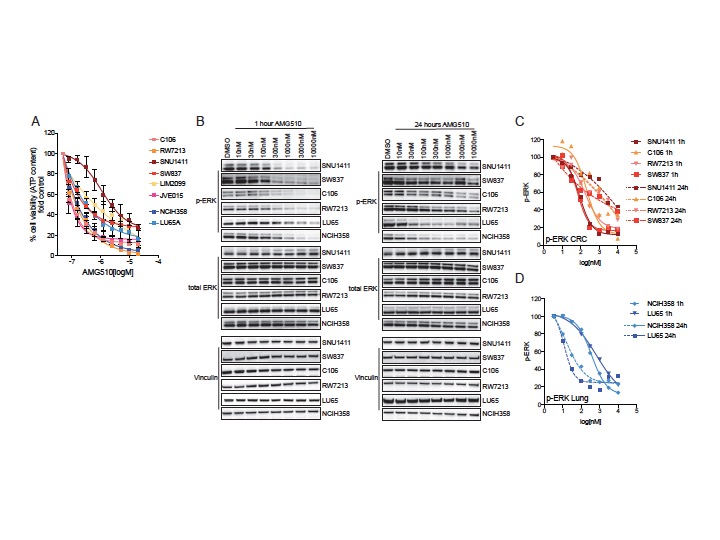Discover and read the best of Twitter Threads about #Organoids
Most recents (14)
From our recent @Nature— a classification [part 4]
‘#Organoids can be used to form #assembloids…’
‘The combination of organoids with other organoids or with different specialized cell types in self-organizing 3D cultures results in emergent features of the system..’
‘#Organoids can be used to form #assembloids…’
‘The combination of organoids with other organoids or with different specialized cell types in self-organizing 3D cultures results in emergent features of the system..’
‘Assembloids are obtained by: incorporating different organoids into multi-region assembloids, such as when combining dorsal with ventral forebrain, cerebral cortex with striatum, or cerebral cortex with thalamus; integrating neural or non-neural cells…’
‘Assembloids can be generated from organoids derived from different individuals, to create inter-individual assembloids, or different species, to create inter-species assembloids’
From our recent @Nature— outlining key terms [part 1]
‘We define #organoids as in vitro-generated cellular systems that emerge by self-organization, include multiple cell types, and exhibit some cytoarchitectural and functional features reminiscent of an organ or organ region.’
‘We define #organoids as in vitro-generated cellular systems that emerge by self-organization, include multiple cell types, and exhibit some cytoarchitectural and functional features reminiscent of an organ or organ region.’
‘Organoids can be generated as 3D cultures or by a combination of 3D and 2D approaches (also known as 2.5D)…For the nervous system, they are generally constructed from pluripotent stem cells but can also be derived from donor tissues with growth potential…’
‘We refer to nervous system organoids by the major anatomic region they model, such as cortical organoids, retinal organoids, hypothalamic organoids or spinal cord organoids’
Self-organizing systems have been one of the most exciting recent advances in stem cell research
However, many names & classifications are used making it challenging to convey the science
We now got together as a field to provide a nomenclature framework
Out in @Nature today👇1/9
However, many names & classifications are used making it challenging to convey the science
We now got together as a field to provide a nomenclature framework
Out in @Nature today👇1/9

We focused on neural #organoids #assembloids & #transplantation
Our consensus is summarized in one simple figure (above) & a short text box 👇
Our consensus is summarized in one simple figure (above) & a short text box 👇

🔬An international consortium, led by #IRBBarcelona & the biotech company @MerusNV, reports the discovery of MCLA-158, the first clinical candidate screened in #organoids targeting 🎯 #cancer #stemcells of solid tumors.
📰@NatureCancer
➡️bit.ly/3MLiu3h
#IRBScience
📰@NatureCancer
➡️bit.ly/3MLiu3h
#IRBScience

Named Petosemtamab, the antibody MCLA-158 prevents the onset of #metastasis (that is, the spread of #cancer to other vital organs) and slows the growth of primary tumours in experimental models of cancer. 

The study also lays the groundwork for the use of #organoids in the #DrugDiscovery process undertaken by pharmaceutical companies.
Organoids are patient-derived samples that can be grown in the laboratory, and they reproduce certain aspects of the tumour compartment.
Organoids are patient-derived samples that can be grown in the laboratory, and they reproduce certain aspects of the tumour compartment.

#Mixtures matter! Check out our new study in @ScienceMagazine where we show the impact of real-life chemical exposure during pregnancy on language development, integrating epidemiology and experimental neurobiology (1/14) science.org/doi/10.1126/sc…
on the same issue, do not miss also the insightful perspective by @liew_zeyan and Pengfei Guo (2/10) science.org/doi/10.1126/sc… (2/14)
and here an animated summary of the story () by @secret_molecule (3/14)
New Lancaster lab publication out in @Nature! This was all @Dabrica’s idea and due to her ingenuity and hard work, with help from @ChiaradiaIlaria, @laupellegrini, and Alex Kalinka. Check it out and see our🧵below!
rdcu.be/cFi7f
rdcu.be/cFi7f
Male and female brains differ in their total brain volume. They also show differential susceptibility for some neuropsychiatric disorders. We sought to explore the developmental origin of these differences by generating brain #organoids from male and female stem cell lines. 

Our paper looking at the long-term maturation of cortical organoids is out! rdcu.be/cfDQt #organoids #brainorganoids
TL;DR - human cortical organoids start to resemble postnatal cortical development after 250-300 days of culturing
TL;DR - human cortical organoids start to resemble postnatal cortical development after 250-300 days of culturing
This work was a great collaboration between @GeschwindLab @PascaStanford @gracexiao99 and @HuguenardLab. Thank you to all coauthors @SeJinYoon3, Sthephan Tran, @MakinsonLab, @jimena_andersen, @FreddyMValencia and Steve Horvath
In this project, we generated human cortical organoids from 6 human iPSC lines and grew them for up to 694(!) days
Thrilled to share new work from my lab @Stanford in @NatureBiotech today on generating functional cortico-striatal #assembloids, striatal #organoids & using them to model disease. Work led by the amazing @myym_yuki with help from @Minyin_Li @fikribirey @omerevah @TheteMayuri. 

and the cortical neurons (green) projecting in cortico-striatal #assembloids
1/11: Interested in genetic screening in #organoids? Check out #CRISPRLICHT 💡, our method for loss-of-function screening in cerebral organoids 🧠 out now in @ScienceMagazine. By @christopher_esk and @DLindenhofer. Short thread.
science.sciencemag.org/content/early/…
science.sciencemag.org/content/early/…

2/11: Screening in organoids is difficult because just like animal tissue - but unlike 2D cells - cerebral organoid tissue grows unequally, masking potential loss of function effects. 

3/11: To overcome this problem, we developed a #CRISPR screen coupled to massive parallel lineage tracing with exact cell counting using dual barcoding in human cerebral organoids.
Thrilled that our work on multiparametric imaging of #organoids is now out (and was perfectly timed for my birthday!) @TrevorCDale @DrPaulShaw @AJ_Hollins @DrMairianThomas journals.plos.org/plosone/articl…
Patient-derived tumour organoids have been shown to closely model patient disease and predict drug responses, and are gaining increasing attention as 3D in vitro models.
They provide a way to study complex cell-cell interactions, which have been somewhat limited in 2D cell cultures. One potential application is to study the effects of cancer stem cell targeting agents (e.g. Wnt signaling inhibitors) on tumour cell populations.
Take a look at this month's spectacular image from our calendar📆!
"Raspberry cookie"🍪, by @criispuig 👩🔬 from Roger Gomis' Lab, is a fluorescence image🔬 of an #organoid generated from #breastcancer cells🧫, where we can see its heterogeneity = presence of different cell types
"Raspberry cookie"🍪, by @criispuig 👩🔬 from Roger Gomis' Lab, is a fluorescence image🔬 of an #organoid generated from #breastcancer cells🧫, where we can see its heterogeneity = presence of different cell types

#Organoids are 3D cell cultures🧫 that mimic some of the structures and functions of an organ🫀. They are derived from stem cells from a tissue or a tumour🏥
📷 from @soclamu at @BatlleLab with @elenasanchosuil
📷 from @soclamu at @BatlleLab with @elenasanchosuil

#Organoids are very useful to study human diseases in the laboratory🥼 and to test drugs💊 for personalised medicine🏥, such as #cancer and #metastasis
📷 from @soclamu at @BatlleLab with @elenasanchosuil
Join our #MetastasisChallenge 💪➡️ bit.ly/2A0iLiX
📷 from @soclamu at @BatlleLab with @elenasanchosuil
Join our #MetastasisChallenge 💪➡️ bit.ly/2A0iLiX

What’s the difference between colon and lung? Not an easy question when it comes to #KRAS. Our work out today in @CD_AACR today describe a strategy to overcome resistance to KRAS G12C inhibition in CRC. @sloan_kettering @Albert0Bardelli @BardelliLab bit.ly/2ACWd7H👇👇👇
(1/5) In the world of weird and unexpected organoids, today we introduce a cardiac/gut model derived from human iPSCs, that we deposited last week @biorxivpreprint disq.us/t/3octfy4 #organoids 

(2/5) What started as a “control” for a completely different series of experiments, turned into its own unique line of research due to the observant eye of @AnaSilva_illust, and @OrianeMatthys & @ArielKauss who fed her cultures while Ana was home for the holidays in Dec 2017. 

(3/5) Some organoids survived in culture for >2 years, growing to several mm’s in size, without any perfused vasculature - defying diffusion and classic dogma in the #tissueengineering field. 

Extremely proud to share my lab’s first paper: ‘Cell-Type Specific Signaling Networks in Heterocellular Organoids’ out today in @naturemethods (1/14) nature.com/articles/s4159…
#Organoids are amazing biomimetic tissue models that contain multiple cell-types (e.g. stem, differentiated), each in their own cell-state (e.g. proliferating, quiescent, apoptotic). (2/14) 

While this complexity is what makes organoids so useful, it also makes them tricky to study. My lab wanted to use organoids to study cell-signalling in cancer – but bulk methods (e.g. LC-MS/MS) couldn’t easily provide cell-type and cell-state specific signalling data. (3/14)





